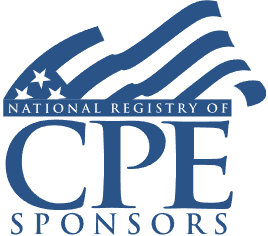Removing PFIC Taint on Foreign Investments Through Subsequent Year QEF Elections
New Final PFIC Regulations and Navigating PFIC Rules of IRC Sections 1291-1298

Course Details
- smart_display Format
On-Demand
- signal_cellular_alt Difficulty Level
Intermediate
- work Practice Area
Tax Law
- event Date
Wednesday, June 30, 2021
- schedule Time
1:00 p.m. ET./10:00 a.m. PT
- timer Program Length
90 minutes
-
This 90-minute webinar is eligible in most states for 1.5 CLE credits.
-
BARBRI is a NASBA CPE sponsor and this 110-minute webinar is accredited for 2.0 CPE credits.
-
BARBRI is an IRS-approved continuing education provider offering certified courses for Enrolled Agents (EA) and Tax Return Preparers (RTRP).
This CLE/CPE course will provide tax attorneys and counsel with a practical guide to removing the "taint" of foreign investments treated as passive foreign investment companies (PFICs). The panel will discuss new final and proposed PFIC regulations, the complex qualified electing fund (QEF) election rules, detailing the advantages, disadvantages, and calculations involved in making a QEF election, and the planning opportunities for electing out of PFIC treatment.
Faculty

Mr. Hatch concentrates his practice on a broad variety of domestic and international tax matters.

Mr. Knobler focuses his practice on U.S. international and domestic tax planning, mergers and acquisitions, and controversies. His clients range from start-ups to multinational corporations.
Description
The PFIC regime imposes a set of U.S. tax rules among the most onerous in all of the Internal Revenue Code. The PFIC rules expose U.S. taxpayers owning stock in passive foreign investment companies to an ordinary income and accrued interest regime that is complicated and expensive. Unlike controlled foreign corporation rules, there are no ownership thresholds for PFIC status.
Because the PFIC regime is intended to prevent U.S. persons from deferring U.S. taxation on passive investments held through foreign companies, taxpayers may avoid the ordinary income and interest treatment by electing to be taxed currently on income from their PFIC holdings.
In December 2020, the IRS released final regulations that include significant changes to the PFIC rules. The final regulations include clarification on indirect ownership, eliminate reliance on Section 954(h) active financing rules, and eliminate certain rents and royalties from the PFIC income and asset tests, along with other key provisions.
The primary mechanism for opting out of the PFIC regime is the election to treat the PFIC as a QEF. This election allows U.S. taxpayers to preserve capital gain treatment for their PFIC gains and to avoid interest accrual by paying tax currently on their pro-rata share of income and gain from the QEF.
The QEF election avoids the ordinary income and interest scheme altogether if made when the foreign investment is acquired. Taxpayers wishing to make a QEF election in years after the year they first acquired the stock must make an additional "purging election" to remove the "PFIC taint" from the stock.
This additional election--which involves gain recognition--is reported on Form 8621. Alternatively, taxpayers holding PFIC stock may be able to make a mark-to-market election for their PFIC stock, reporting proceeds from deemed sales annually as ordinary income, but only if the PFIC stock is publicly traded.
Listen as our experienced panel goes beyond the basics of Form 8621 to provide a thorough discussion of QEF elections and other means of avoiding the PFIC regime.
Outline
- Recent final PFIC regulations
- Code provisions governing PFIC treatment, purging, and deemed distribution rules
- Section 1291 default treatment
- Section 1295 QEF provisions
- Section 1296 mark-to-market option
- Section 1298 special rules
- Ownership rules
- When PFIC shares are owned by a pass-through entity
- When PFIC shares are owned by a trust or estate
- Rules when a foreign corporation or entity is classified as both a PFIC and a controlled foreign corporation
- Purging elections to remove PFIC "taint"
- Making election in the year of purchase
- Making election in a subsequent year after initial purchase
- Mark-to-market elections
- Entity classification elections
Benefits
The panel will review these and other important issues:
- Final PFIC regulations
- Identifying assets that qualify as PFIC holdings
- Differentiating tax results between PFIC, mark-to-market, and QEF scenarios
- Assessing the tax impact of a QEF election in a year subsequent to the acquisition of the PFIC stock
NASBA Details
Learning Objectives
After completing this course, you will be able to:
- Determine scenarios in which to make a QEF election
- Identify the elections necessary to make a QEF election in a year subsequent to asset acquisition
- Discern whether a mark-to-market election would be available and might be advised
- Recognize the current year tax impact of elections to remove PFIC taint from foreign investments
- Field of Study: Taxes
- Level of Knowledge: Intermediate
- Advance Preparation: None
- Teaching Method: Seminar/Lecture
- Delivery Method: Group-Internet (via computer)
- Attendance Monitoring Method: Attendance is monitored electronically via a participant's PIN and through a series of attendance verification prompts displayed throughout the program
- Prerequisite: Three years+ business or public firm experience at mid-level within the organization, preparing complex tax forms and schedules; supervisory authority over other preparers/accountants. Knowledge and understanding of passive foreign investment company (PFIC) rules, including taxation of PFICs and filing requirements; familiarity with IRS Form 8621.

Strafford Publications, Inc. is registered with the National Association of State Boards of Accountancy (NASBA) as a sponsor of continuing professional education on the National Registry of CPE Sponsors. State boards of Accountancy have final authority on the acceptance of individual courses for CPE Credits. Complaints regarding registered sponsons may be submitted to NASBA through its website: www.nasbaregistry.org.

Strafford is an IRS-approved continuing education provider offering certified courses for Enrolled Agents (EA) and Tax Return Preparers (RTRP).
Related Courses

Equity Compensation Grants in Partnerships and LLCs: Overcoming Tax Challenges and Key Planning Techniques
Tuesday, April 22, 2025
1:00 p.m. ET./10:00 a.m. PT
Recommended Resources
How CPE Can Bridge the Gap Between What You Know and What You Need to Know
- Career Advancement
Gain a Competitive Edge Through Efficient CPE Strategies
- Learning & Development
- Business & Professional Skills
- Career Advancement